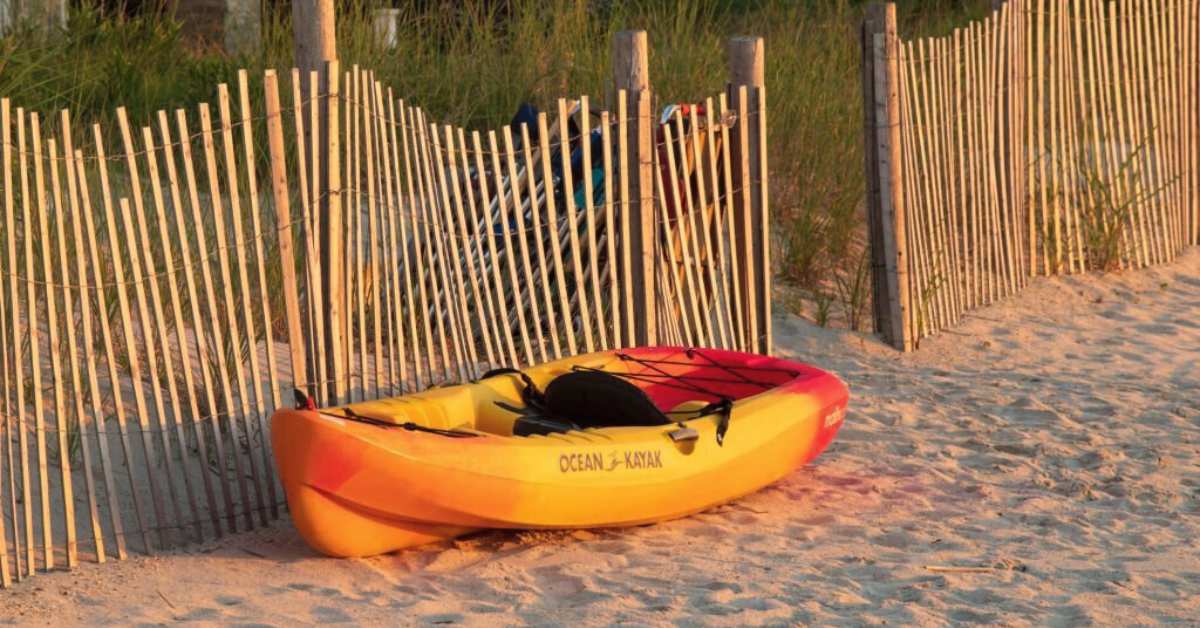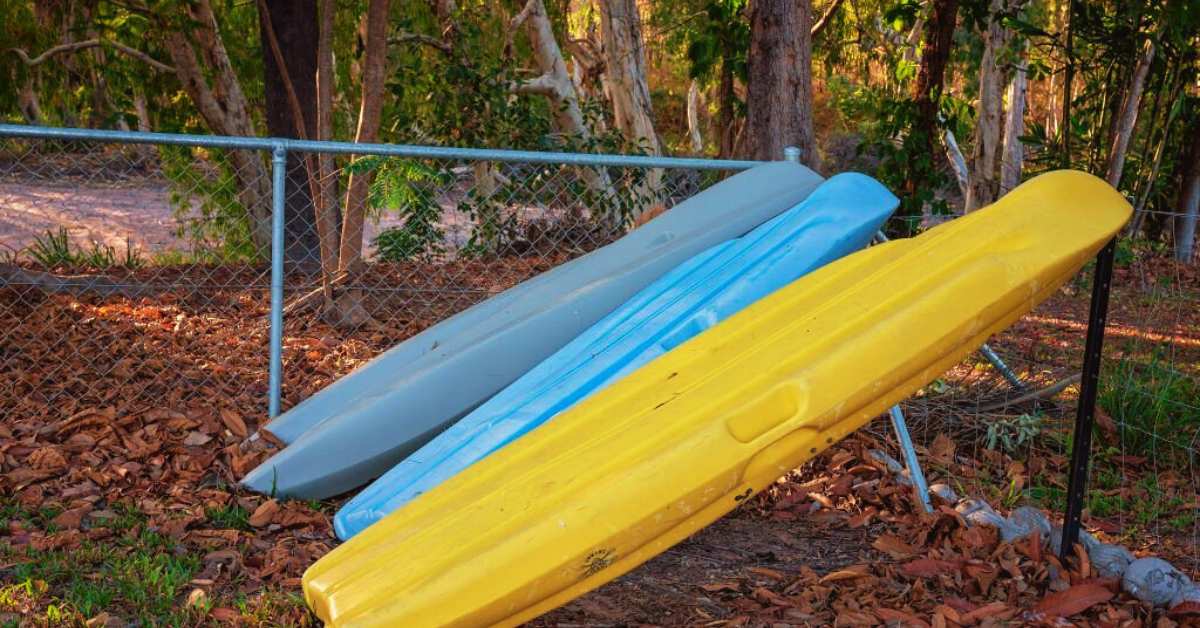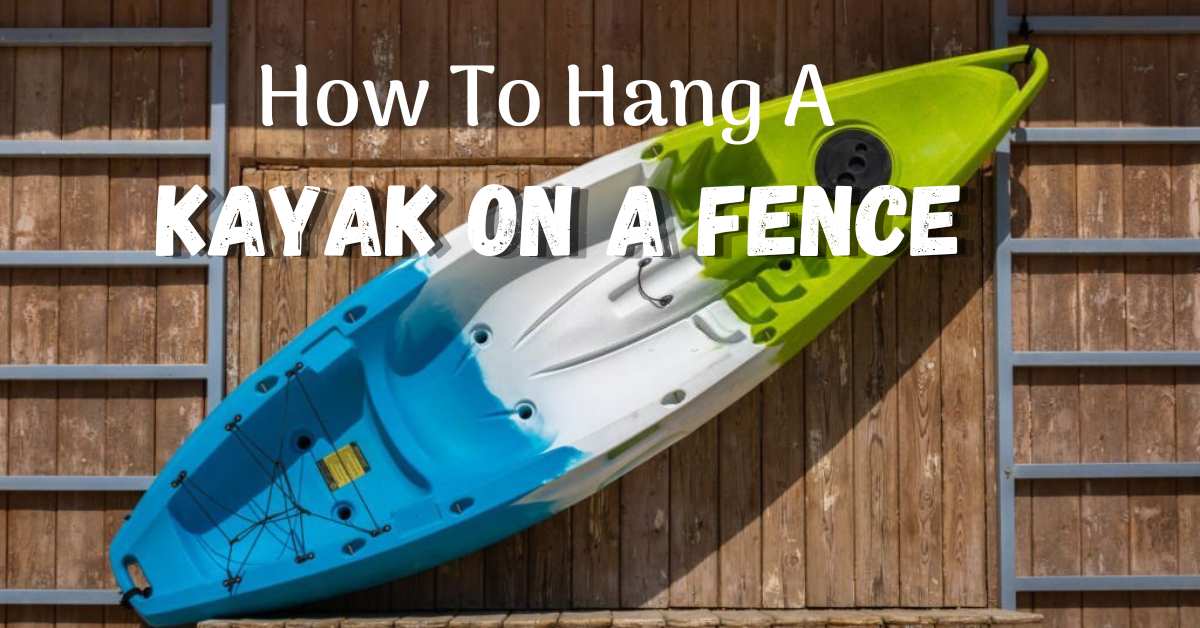If you’re looking for a convenient and space-saving way to store your kayak when it’s not in use, hanging it on a fence might be the solution you’re looking for.
Whether you have limited storage space or simply want easy access to your kayak, utilizing your fence can offer a practical storage solution.
In this guide, we’ll walk you through the step-by-step process of securely Hang A Kayak On A Fence, ensuring that it remains protected from potential damage. So, if you’re ready to learn how to hang your kayak on a fence, let’s dive in!
Table of Contents
Choose the Location
When hanging a kayak on a fence, selecting the right location is crucial for its safety and longevity. It’s best to choose a spot that is protected from direct sunlight and extreme weather conditions.
The place should be accessible and devoid of obstacles that might harm the kayak.
To secure it properly, it’s recommended to use strong hooks or straps. By considering these factors carefully, you can hang your kayak on a fence effectively while keeping it safe from harm.
-
Select a spot on your fence where you want to hang the kayak
When hanging a kayak on a fence, it’s important to find a suitable spot that can support the weight of the kayak without damaging either the fence or the kayak itself. Carefully assess the fence and choose a location accordingly.

Once you’ve found the right spot, securely fasten the kayak to the fence using appropriate hardware and techniques.
By following these steps, you can perfectly hang your kayak on a fence, ensuring its longevity and proper storage.
Gathering Necessary Tools and Materials
Before attempting to hang a kayak on a fence, it’s crucial to gather the essential tools and materials. Here is a list of what you will need:
– Kayak hangers or brackets: These are specifically designed to hold the weight of a kayak and provide a secure attachment point.
– Screws or bolts: Depending on the type of hangers you choose, you will need appropriate fasteners to attach them to the fence.
– Drill: A drill is used to make fence holes for screws or bolts.
– Level: A level is needed to put kayak hangers straight and level on the fence.
– Measuring tape: Use a tape to position the fence hangers optimally.
– Pencil: Mark the spots on the fence where you will be drilling or attaching the hangers.
– Safety goggles: Protect your eyes while drilling or attaching the hangers.
To ensure your kayak stays secure and in good condition until your next water adventure, it’s important to gather the necessary tools and materials beforehand for hanging it securely on the fence.
-
Drill Pilot Holes
Hanging a kayak on a fence saves space, but it must be properly placed to avoid mishaps. Gather a drill, measuring tape, screws or hooks, and level before starting.
Start by finding a safe position on the fence to hang the kayak. Measure your kayak’s height and breadth using a tape measure and mark the fence.
Pilot holes must be drilled into the fence at the designated places. Pilot holes guide screws or hooks and avoid wood splitting or breaking.
Drill a little smaller than the screws or hooks you want to use. After drilling the pilot holes, line the kayak hangers or hooks and tighten the screws.
Level and adjust the kayak to ensure it is straight. Hanging a kayak on a fence saves room and makes it simple to access and store, getting you ready for the next water trip.
-
Install Hangers or J-Hooks
If you’re an active kayaker with little storage, hang your kayak on a fence. Start by gathering two kayak hangers or J-hooks, a drill, screws, a level, and a measuring tape. First, decide where to put your kayak on the fence. Make sure the site is safe and accessible.
Hangers or J-hooks should be fitted at the height shown on the measuring tape between the kayak’s cockpit and the ground. Grab your drill and install the fence hangers or J-hooks.
Check their levelness and fastening. Carefully raise the kayak and slip it onto the hangers or J-hooks, centering and balancing it.
Finally, make sure the kayak is firmly attached to the fence and not dropping or being damaged. Now that your kayak is secure and accessible, you can enjoy the water instead of worrying about storage.
Securing the Kayak
Ensuring the safety of a kayak can be achieved by properly hanging it on a fence. Here are the steps to follow for securely hanging a kayak.
Securing a kayak on a fence can be a great way to save space and keep your kayak safe. Here are some steps on how to hang a kayak on a fence:
– Find a suitable location: Look for a sturdy fence or wall where you can securely hang your kayak. Make sure the area is easily accessible and won’t cause any obstructions.
– Choose the right equipment: You will need some kayak hangers or hooks specifically designed for this purpose. These can be found at outdoor supply stores or online.
– Measure and mark: Measure the width of your kayak and mark the appropriate distance on the fence where you want to hang it. This will ensure that the kayak is properly supported and balanced.
– Install the hooks or hangers: Using a drill or screwdriver, attach the hooks or hangers to the fence according to the marked measurements. Make sure they are securely fastened and can bear the weight of the kayak.
– Hang the kayak: Carefully lift the kayak and place it onto the hooks or hangers. Make sure it is centered and balanced to prevent it from falling or tilting.
– Secure the kayak: To ensure extra stability and prevent any accidental slippage, you can use bungee cords or straps to secure the kayak to the fence. This will provide added peace of mind.
– Regular maintenance: Periodically check the hooks or hangers for any signs of wear or damage. Replace them if necessary to maintain the security and safety of your kayak.
By following these steps, you can effectively hang and secure your kayak on a fence, saving valuable space and keeping your kayak protected when not in use.
-
Preventing the kayak from accidentally falling off
It is crucial to securely position a kayak on a fence to avoid any unintended displacement. To achieve this, there are certain guidelines that should be followed.
First, lift the kayak and place it on the fence with the cockpit facing downward. Next, secure the kayak to the fence using straps or ropes, ensuring a tight fastening.
Lastly, regularly check the kayak to ensure it remains in place. By following these measures, you can effectively prevent any accidental falls of the kayak from the fence.
Maintenance and Regular Checks
As a kayaker, it is important to understand the significance of regular maintenance and inspections for the longevity of your equipment. Properly maintaining your kayak ensures its safety and efficiency.

A great way to save space and protect your kayak is by hanging it on a fence. Not only does this keep your kayak out of the way, but it. Find a solid fence post or structure that can support your kayak to hang it on a fence.
Next, attach kayak straps or hooks to the fence at a height for easy removal. Make sure the straps or hooks are properly attached to the fence to prevent kayak falls.
To avoid hull stress, suspend your kayak level and balanced. Check for wear and loosened straps or hooks and replace them as required.
Before you hang up your kayak, it’s important to inspect it for any dents, cracks, or damage. Performing regular maintenance and inspections will help keep your kayak in excellent condition for your next adventure.
Final Words
These guidelines offer a complete approach to hanging a kayak on a fence. It is crucial to ensure that the fence can support the weight of the kayak and to use suitable hardware like J-hooks and carabiners for secure attachment.
Additionally, consider the height at which the kayak is hung to prevent any potential damage. By following these steps, you can safely and easily hang your kayak on a fence while preserving its longevity and accessibility for future use.
